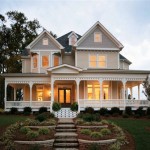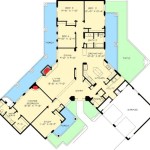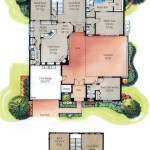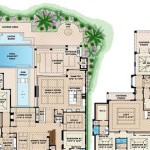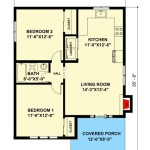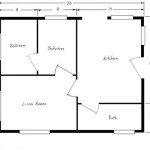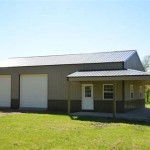Small Modern Home Design Plans: Maximizing Space and Style
The increasing urbanization and rising land costs have fueled a demand for small modern home design plans. These plans prioritize efficient space utilization, contemporary aesthetics, and sustainable practices, catering to individuals and families seeking comfortable and stylish living in compact footprints. This article explores key considerations, design elements, and strategies employed in developing successful small modern home design plans.
Understanding the Core Principles of Small Modern Home Design
Small modern home design hinges on several crucial principles that distinguish it from traditional large-scale residences. These guiding principles ensure that the resulting design is not only aesthetically pleasing but also highly functional and adaptable to the needs of its occupants.
One of the fundamental principles is
space optimization
. This involves minimizing wasted space and maximizing the utility of every square foot. Multifunctional furniture, built-in storage solutions, and open floor plans are commonly used to achieve this goal. Vertical space is also leveraged through features like lofts and high ceilings to create a sense of spaciousness.Another key principle is
natural light integration
. Large windows, skylights, and light wells are strategically positioned to flood the interior with natural light. This not only reduces the need for artificial lighting during the day but also creates a brighter and more inviting atmosphere. Thoughtful window placement also considers solar orientation to maximize passive heating and cooling, reducing energy consumption.Minimalism
plays a significant role in small modern home design. Clutter is minimized by focusing on essential elements and clean lines. This aesthetic approach contributes to a sense of order and tranquility, making the small space feel less cramped and more relaxing. Storage solutions are designed to be discreet and integrated seamlessly into the overall design.Finally,
sustainable design
is often incorporated into small modern home plans. This can involve using environmentally friendly materials, implementing energy-efficient appliances and systems, and incorporating water conservation strategies. Sustainable design not only reduces the environmental impact of the home but also can lower operating costs in the long run.Key Design Elements in Small Modern Homes
Several design elements are commonly found in small modern home plans, working together to create a cohesive and functional living space. These elements contribute to the overall aesthetic appeal and enhance the usability of the home.
Open Floor Plans:
Open floor plans are a hallmark of modern design and are particularly effective in small homes. By eliminating interior walls between living areas, such as the kitchen, dining room, and living room, the space feels larger and more connected. This encourages social interaction and allows natural light to flow freely throughout the home. However, careful zoning and furniture placement are essential to define distinct areas within the open space.Multifunctional Furniture:
Furniture pieces that serve multiple purposes are invaluable in small homes. Examples include sofa beds, storage ottomans, folding tables, and desks that can be converted into guest beds. These versatile items maximize functionality without taking up excessive space. Selecting furniture with a streamlined design and neutral colors can further enhance the sense of spaciousness.Built-in Storage:
Built-in storage solutions, such as shelving units, cabinets, and drawers, are integrated into the walls and other structural elements of the home. This maximizes storage capacity without encroaching on living space. Built-in storage can also be customized to fit specific needs and preferences, ensuring that every inch of space is utilized efficiently. Concealed storage, like under-bed drawers or hidden compartments, is particularly useful for keeping clutter out of sight.Vertical Space Utilization:
Small homes often benefit from maximizing vertical space. High ceilings can create a sense of spaciousness, and loft spaces can be used for bedrooms, offices, or storage. Vertical storage, such as tall bookshelves or cabinets, can also help to keep the floor uncluttered. Using vertical elements like accent walls or artwork can draw the eye upward and further enhance the perception of height.Large Windows and Natural Light:
The incorporation of large windows is a crucial element in small modern homes. Strategically placed windows maximize the amount of natural light entering the space, making it feel brighter and more open. Skylights can also be used to bring natural light into areas that might otherwise be dark. Window treatments should be chosen carefully to balance privacy and light control. Lightweight curtains or blinds allow light to filter through while maintaining privacy.Minimalist Decor and Color Palettes:
A minimalist approach to decor is essential for small modern homes. Clutter should be minimized, and only essential items should be displayed. Neutral color palettes, such as white, gray, and beige, are commonly used to create a sense of openness and tranquility. Pops of color can be added through accessories, such as artwork, pillows, and rugs, to add personality and visual interest. Avoid overly ornate or bulky decorations that can overwhelm the space.Strategies for Developing Effective Small Modern Home Design Plans
Developing a successful small modern home design plan requires a thoughtful and strategic approach. Several key strategies can help to ensure that the resulting design meets the needs and preferences of the occupants while maximizing space and functionality.
Detailed Needs Assessment:
The first step in developing a small modern home design plan is to conduct a thorough needs assessment. This involves identifying the specific needs and preferences of the individuals or families who will be living in the home. Consider the number of occupants, their lifestyles, and their storage requirements. Determine the essential spaces, such as bedrooms, bathrooms, kitchen, and living areas. Prioritize these spaces based on their importance and frequency of use.Space Planning and Conceptual Design:
Once the needs have been identified, the next step is to develop a space plan. This involves experimenting with different layouts and configurations to determine the most efficient use of space. Consider the flow of movement between different areas and the relationship between indoor and outdoor spaces. Create a conceptual design that outlines the overall aesthetic and style of the home. This design should incorporate the principles of modern design, such as clean lines, minimalist decor, and natural light integration.3D Modeling and Visualization:
Create 3D models and visualizations of the proposed design to gain a better understanding of how the space will look and feel. This allows for experimentation with different design options and the identification of potential problems before construction begins. 3D models can also be used to showcase the design to stakeholders, such as family members, contractors, and local planning authorities. Virtual reality (VR) technology can provide an even more immersive experience, allowing users to walk through the space and experience it firsthand.Flexible Design and Adaptability:
Consider the potential for future changes and adaptations. Design the home to be flexible and adaptable to changing needs. This can involve incorporating modular elements that can be easily reconfigured or designing spaces that can be used for multiple purposes. For example, a home office could be designed to function as a guest room when needed. This flexibility ensures that the home remains functional and relevant over time.Professional Consultation:
Seek professional advice from architects, interior designers, and contractors who specialize in small modern home design. These professionals can provide valuable insights and guidance, helping to avoid common mistakes and ensure that the design meets all applicable building codes and regulations. They can also assist with material selection, space planning, and construction management.Prioritize Natural Light:
Natural light is important for our well-being and can make a small space feel much larger. Prioritize window placement to maximize natural light throughout the day. Consider the orientation of the house to capture morning and afternoon sun. Use light-colored walls and ceilings to reflect light and make the space feel brighter. Avoid heavy curtains or blinds that block natural light. Use sheer curtains or blinds that allow light to filter through while maintaining privacy.Outdoor Living Spaces:
Extend the living space outdoors by creating a patio, deck, or balcony. This can provide a valuable additional living area, especially during the warmer months. Outdoor living spaces can be designed to be extensions of the indoor space, with similar design elements and materials. Consider incorporating outdoor furniture, lighting, and landscaping to create a comfortable and inviting outdoor environment.
Small House Plan Ultra Modern Plans For Arizona Floorplans

Tiny Modern House Plans Small And Floor

18 Small House Designs With Floor Plans And Decors Modern Exterior

Modern Style On A Budget 10 Tiny Cool House Plans Houseplans Blog Com

3 Bedrooms Home Design Plan 10x12m Samphoas 3ac Plantas De Casas Projetos Terreas Fachadas

Best Ing Small House Plans Mark Stewart Modern Home Design

18 Small House Designs With Floor Plans And Decors Design Construction Plan Model

Modern Style On A Budget 10 Tiny Cool House Plans Houseplans Blog Com

Small Modern House Plans Home Floor Designs The Designers

Modern Open Floor House Plans Blog Eplans Com

